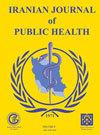Assessing the Iran Health System in Making Progress towards Sustainable Development Goals (SDGs): A Comparative Panel Data Analysis
IF 1.4
4区 医学
Q3 Medicine
引用次数: 0
Abstract
Background: Sustainable development goals' (SDGs) analysis can be caused a better understanding of factors contributing to access to health services and help shape policies to attain health goals. This review aimed to measure and compare the SDGs between Iran and selected categories. Methods: This study was a comparative cross-sectional study. We identified indicators of health status based on the SDGs report 2019. The status of SDGs indicators was compared in Iran to four categories, including selected countries with similar social, economic, and health status, six regions of the WHO, the average of each income level group. SPSS 20 and Excel 2019 software were used for descriptive data analysis. Results: The average life expectancy and healthy life expectancy were 75.7 years and 65.4 respectively in Iran. Iran's mortality rate in indicators named road traffic (32.1 per 100000 population), suicide (4.1 per 100000 population), and unintentional poisoning (1.2 per 100000 population) were higher than most of the categories. Iran's status in morbidity indicators had an approximately lower rate than all categories. Iran had full coverage in three immunization indicators like DTP3 immunization, MCV2 immunization, and PCV3 immunization, which was higher than all categories. Coverage of UHC in Iran (65%) was near to the global average (64%) and higher than the eastern Mediterranean Region (53%). Moreover, the prevalence of tobacco smoking (10.95%) and alcohol consumption (1%) were lower than global (6.4%) and the WHO regions (1.8%) average. Conclusion: Health status measurement is a trend that requires the collection, processing, analysis, and dissemination of data by a set of indicators. There are several weaknesses in reported data in the SDGs for some indicators, the data collection process should be noticed seriously by policymakers.评估伊朗卫生系统在实现可持续发展目标(SDGs)方面取得的进展:一项比较面板数据分析
背景:对可持续发展目标的分析可以使人们更好地了解有助于获得卫生服务的因素,并有助于制定政策以实现卫生目标。该审查旨在衡量和比较伊朗和选定类别之间的可持续发展目标。& # x0D;方法:本研究为比较横断面研究。我们根据2019年可持续发展目标报告确定了健康状况指标。伊朗将可持续发展目标指标的状况与四类进行了比较,其中包括具有类似社会、经济和卫生状况的选定国家、世卫组织的六个区域、每个收入水平组的平均值。使用SPSS 20和Excel 2019软件进行描述性数据分析。
结果:伊朗人均预期寿命和健康预期寿命分别为75.7岁和65.4岁。伊朗在道路交通(每10万人32.1人)、自杀(每10万人4.1人)和意外中毒(每10万人1.2人)指标方面的死亡率高于大多数类别。伊朗在发病率指标方面的地位比所有类别的发病率都低。伊朗在百白破三联免疫、MCV2免疫、PCV3免疫等三个免疫指标上实现全覆盖,高于所有类别。伊朗全民健康覆盖(65%)接近全球平均水平(64%),高于东地中海区域(53%)。此外,吸烟(10.95%)和饮酒(1%)的流行率低于全球(6.4%)和世卫组织区域(1.8%)的平均水平。结论:健康状况测量是一种趋势,需要通过一套指标来收集、处理、分析和传播数据。可持续发展目标中某些指标的报告数据存在若干缺陷,政策制定者应认真注意数据收集过程。
本文章由计算机程序翻译,如有差异,请以英文原文为准。
求助全文
约1分钟内获得全文
求助全文
来源期刊

Iranian Journal of Public Health
医学-公共卫生、环境卫生与职业卫生
CiteScore
2.20
自引率
7.10%
发文量
0
审稿时长
2 months
期刊介绍:
Iranian Journal of Public Health has been continuously published since 1971, as the only Journal in all health domains, with wide distribution (including WHO in Geneva and Cairo) in two languages (English and Persian). From 2001 issue, the Journal is published only in English language. During the last 41 years more than 2000 scientific research papers, results of health activities, surveys and services, have been published in this Journal. To meet the increasing demand of respected researchers, as of January 2012, the Journal is published monthly. I wish this will assist to promote the level of global knowledge. The main topics that the Journal would welcome are: Bioethics, Disaster and Health, Entomology, Epidemiology, Health and Environment, Health Economics, Health Services, Immunology, Medical Genetics, Mental Health, Microbiology, Nutrition and Food Safety, Occupational Health, Oral Health. We would be very delighted to receive your Original papers, Review Articles, Short communications, Case reports and Scientific Letters to the Editor on the above mentioned research areas.
 求助内容:
求助内容: 应助结果提醒方式:
应助结果提醒方式:


